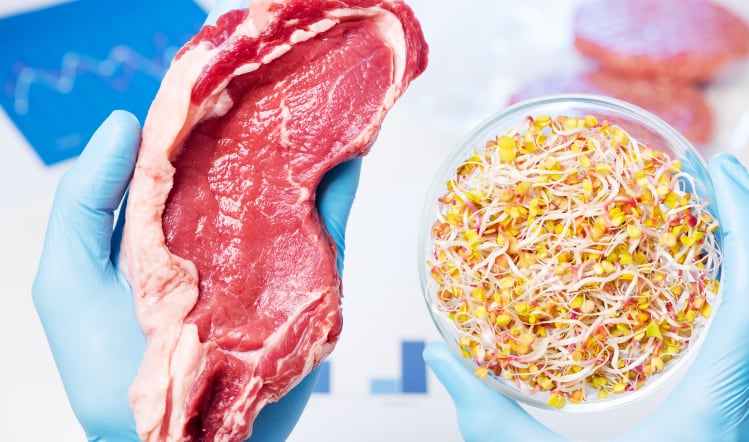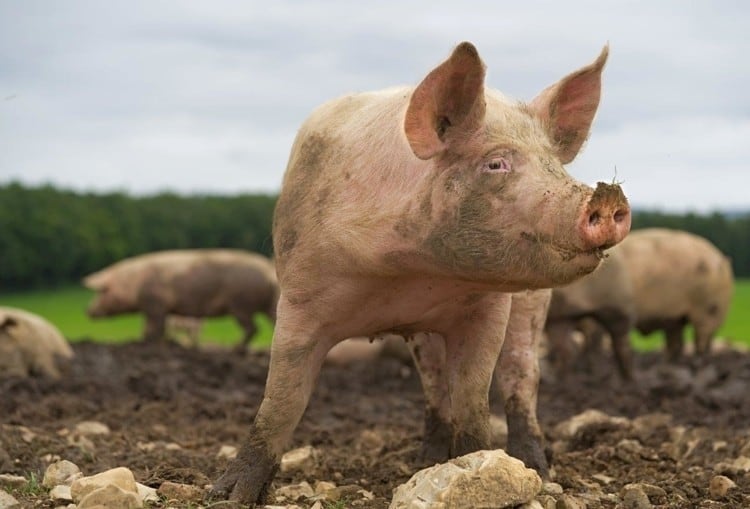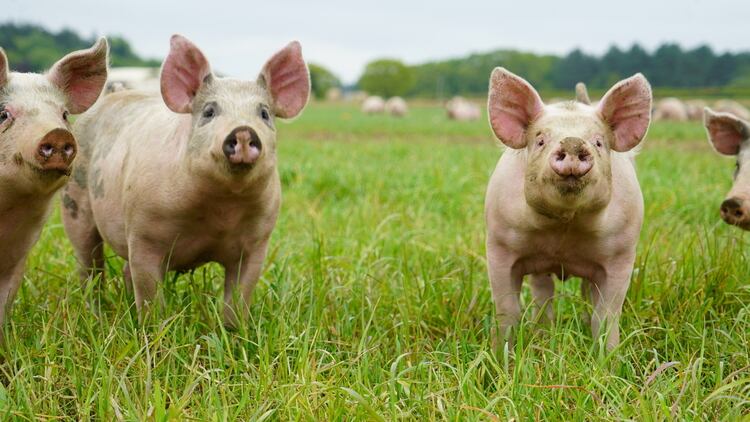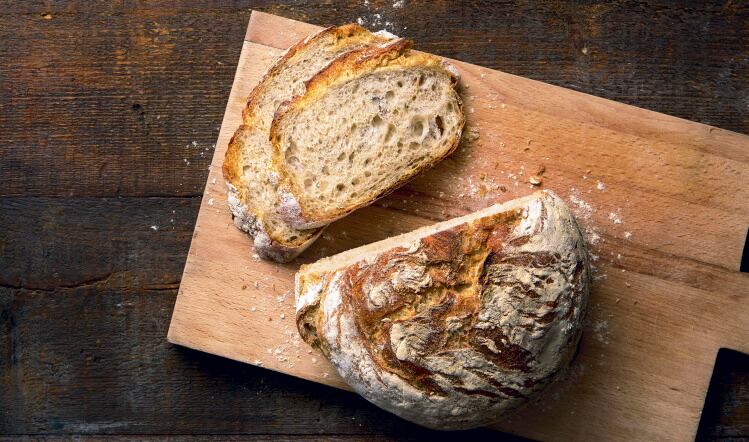Expect the meat industry to fight back in 2020. After the Greta Thunberg phenomenon pitched an environmental angle into the growing number of consumers already shifting to flexitarian, vegetarian or vegan diets as a result of health concerns, “the meat lobby has been galvanised into action”, says British Meat Processors Association (BMPA) chief executive Nick Allen.
“It’s not about being on the defensive, but getting on the front foot in selling ourselves to the consumer in a much better way, because if we don’t, we’re not going to survive.”
Potential even exists to build a positive story around the environmental angle, says Allen, with Britain and Ireland boasting among the lowest carbon footprints in global meat production.
Despite the sustained criticism in 2019, meat sales have held up better than expected, with Agriculture & Horticulture Development Board (AHDB)/Kantar data for the 52 weeks to 6 October indicating a fall in
GB volume sales of beef and lamb by only a respective 0.7% and 0.6%.
Volume sales of pork and poultry climbed by 1% and 0.8% over the same period, while overall household penetration for red meat ended the 52 weeks at 91.1%, led by beef at 86%, pork at 70% and lamb at 52.9%.
“Sales are down slightly, but probably not as much as most people would think, given the barrage of anti-meat propaganda,” says Allen. “There’s no doubt it is having a negative impact, but equally, we’ve been gaining a bit of traction on export markets, imports have declined, and the population is creeping up, so it has balanced itself out a little bit.”
Low consumer confidence linked to Brexit may be another contributor to beef and lamb sales taking a small hit over the past year. “It is just that people are keeping a little bit more money in their pocket, and beef and lamb are the two most expensive proteins,” says Allen.
Further, without the good weather of summer 2018, sales of burgers and steaks suffered last year.
Within the beef category, beef mince volume sales continued to post strong growth, up 3.1% in the year to 6 October, while the greatest decline was in roasting joints and frying/grilling steaks.
“There has been slight growth in pork volumes,” says Steven Evans, consumer insight manager at the AHDB. “Quicker-cooking primary cuts, as well as ready-to-cook products, win in the market. Leaner cuts, such as loin medallions and steaks, are also benefiting from increasing concerns about health. Chicken and fish continue to record strong long-term growth within the protein market, highlighting the competitive landscape for red meat.”
More recent Kantar data supplied by Moy Park indicates continued growth for chicken, at 1.4% in value and 3.3% in volume for the 52 weeks to 1 December 2019, with fish sales up 3.6% in value and 5.8% in volume.
“Within fresh chicken, all sectors other than whole chickens are in growth, with the largest sector, breast fillets, seeing a healthy value performance of +3.1%,” says Moy Park head of research and insight Jason Winstanley.
“Chicken is a very versatile protein, offering health benefits, with an advantageous price position compared to many other proteins.”
Samworth seizes on the growth of game
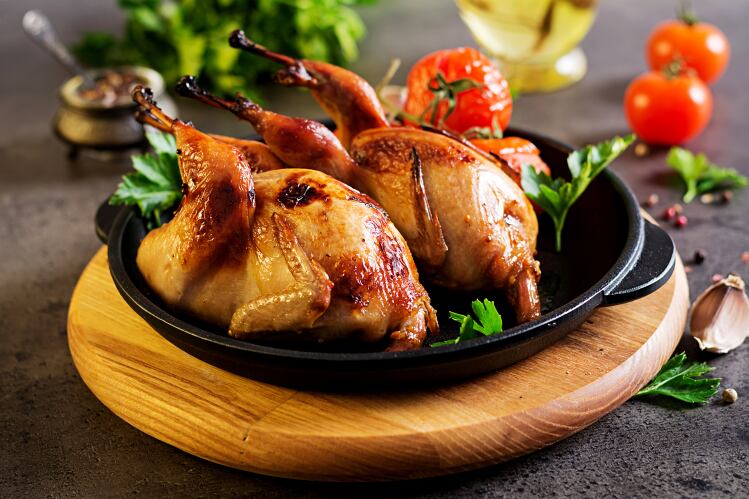
Sales of game meat in the UK are on the increase, and a major meat processor is working with the British Game Alliance (BGA) to further capitalise on the trend.
UK game sales have risen by 8% (to £114m) in the past year, according to the BGA, meaning an estimated 14% of the population now regularly consume game meat, it adds.
Ambitious to grow the market further, Samworth Brothers has collaborated with the BGA on a range of new dishes, created by its own chefs. These include a game pie, a game pork pie, and a pheasant and fennel sausage roll – all developed using BGA-assured meat.
The range will be predominantly sold through contract caterers, with further products being developed and trialled.
“By using Sam-worth’s supply into the retail space, we hope to get a lot more BGA-assured products listed into more major retailers along with our existing foodservice operators,” says BGA managing director Thomas Adams.
The tie-up between Samworth and the BGA is what the game sector needs to ensure such products reach the masses, says former Waitrose managing director Mark Price. “Innovation and competitive pricing will be the leading drivers to growing game sales in the UK,” he adds.
Waitrose recently reported an increase in searches for feathered game on its website.
Health and sustainability
Chicken has also benefited from negative attention around the environmental footprint of red meat.
While noting “a major movement towards more meat-free eating, not just in the UK but across Europe and into North America”, Winstanley says 94% of UK households continue to buy meat, fish or poultry on a weekly basis (Kantar).
“Our research shows that about a third of consumers are reducing their meat consumption, but for many, this means eating more white meat or fish and less red meat, rather than cutting out animal proteins entirely,” he says.
Moreover, Evans says that, while YouGov/AHDB data (September 2019) identifies 3% of British people as claiming they are now vegan, a further 7% vegetarian and 4% pescetarian, research by Kantar suggests only 0.6% actually consume no meat, fish or dairy products on a weekly basis, “demonstrating that, for some, the vegan diet is more aspirational than achievable”.
“The bigger threat to meat consumption comes from flexitarians, those easing back on meat consumption rather than leaving the category altogether,” he says. “AHDB/YouGov Tracker highlights 13% in total are worried about the amount of red meat that they eat, up from 8% in 2015.”
Phil Bicknell, director of market intelligence at AHDB, says: “I don’t think I’ve been to a single industry meeting in the last year where consumer concerns around veganism, environment or welfare weren’t a talking point. Environment and welfare go hand in hand with a responsible industry, and I’d argue that there’s a gap between perception and reality.
“The issue becomes how we respond to the challenge, how we underline our credentials and emphasise our reputation. Processors and retailers will be critical when it comes to invigorating the category with point-of-sale, NPD and promotional tactics, but helping to ensure that meat and dairy don’t drop off shopping lists or menus is at the heart of our role.”
Allen says one potentially positive outcome from Brexit could be greater freedom for the UK meat sector to market its assets. “We’ve got one of the best animal welfare set-ups in the world, a good environmental footprint compared to other systems and in the way we produce livestock on grass – it’s quite a healthy product,” he says.
“We need to seize all those and promote ourselves as hard as we can to the British public to protect ourselves from cheaper imports, and make sure the public puts British first.”
Mark Bishop, co founder of Interfood Technology, agrees the focus on veganism and environmental issues offers opportunities “for new revenue streams and for developing the business of those who produce meat responsibly”.
“We do need to ensure that the debate remains balanced, though, with counter arguments to some of the sensationalist headlines that are currently preoccupying the media,” says Bishop. “The BBC documentary Meat: A Threat to our Planet is a good example. The focus was very much on the ‘factory farming’ operations typical in Brazil and the US, with scant regard for the much more sustainable meat-rearing practices adopted in the UK and in many European countries.”
Bishop lauds initiatives such as Hybu Cig Cymru - Meat Promotion Wales’ (HCC’s) campaign to demonstrate how lamb and beef can remain a choice for environmentally conscious consumers.
Also, with plastic another hot topic for the green lobby, packaging is another area in which the meat industry can improve its credentials.
“The reduction in plastic packaging and the adoption of alternative packaging materials can mean significant investment requirements,” says Phil Crozier, business development manager at Multivac UK. “However, Multivac has many solutions, which could mean zero to little investment is required. While some animal protein processors have also begun to develop vegan or vegetarian products in dedicated factories, our packaging and processing equipment is equally at home with all products.”
Crozier says that while skin packaging continues to be a popular choice for beef and fish, processors have been reducing weight by replacing heavier-gauge semi-rigid with fully flexible packaging.
The mega trends
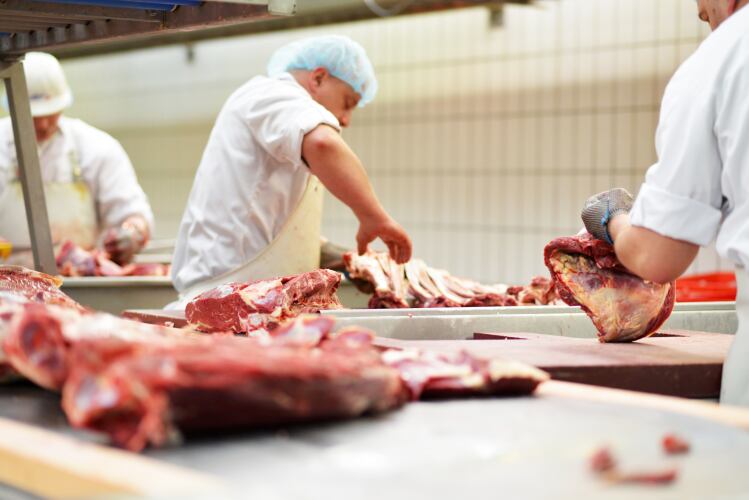
Alongside health and sustainability, Winstanley identifies convenience as one of three “mega trends” leading consumer demand in not only meat and poultry, but the whole of grocery. He says growth has continued in prepared chicken, including coated products, but particularly breast fillets as a result of their versatility and price point.
“Our research shows that consumers often choose breast fillets because of the many uses to which they can be put, either as a centre-of-plate offering, or as part of a dish,” he says. “While many consumers eschew the idea of a ready meal, most are prepared to accept a helping hand with their cooking, so there is great potential to add value to chicken by marinating, flavouring and coating products.”
Chicken is a good base protein to help introduce consumers to new flavours, says Winstanley. While fresh chicken is achieving household penetration of over 80% (Kantar), scope exists to extend the market for other chicken categories.
“The industry itself has a culture of continuous improvement, and efficiencies and automation are improving all the time,” he says.
Crozier identifies “huge opportunities within the meat and poultry sectors for product premiumisation, greater efficiency and automation, delivering consumer-friendly, trending products alongside greatly-reduced labour costs”.
“Premium products are much more easily achieved at little or no extra cost to the processor, thanks to advances in equipment technology,” says Crozier.
One example of kit supplied by Multivac UK is the Risco RS 920 Flex portioner, meeting consumer demand for high-quality, artisanal mince and burger products.
Allen highlights mince is forever in demand as a convenient staple, while portion control is also driving NPD. “Portions tend to be getting smaller and people are looking for less plate waste,” he says. “They tend to avoid anything with a big lump of fat attached to it.”
Turning to flavour trends, AHDB’s latest consumer insight report identifies ongoing popularity for ‘established’ cuisines, such as Italian, Indian and Chinese, and continued growth for pulled pork, fajitas, ribs, chillis and Thai curries. Up-and-coming global influences, meanwhile, include Korean, Japanese and Vietnamese influences.
Winstanley says: “Many consumers now seek something a little different from their food, so we expect to see elements of trending cuisines, such as modern Indian, Filipino and west African, making their way into the mainstream. Also, expect Japanese influences to be strong in 2020 as the Olympics take centre stage.”
Brexit
Any look at trends cannot ignore Brexit and its likely impact on the UK meat industry. One impact it has already had is to escalate both labour shortages and demand for automation.
“In abattoirs, for example, the availability of labour is becoming a real issue,” says Bishop. “High staff turnover is resulting in the use of inexperienced workers, with a significant increase in the potential for injury.
“We have, therefore, seen a greater focus on methods to improve safety in bandsaw use, such as our BladeStop bandsaw system, which is designed to stop the blade when a hand comes into close proximity.”
On a more macro level, the sector is keeping a keen eye on deals to be struck over global imports and exports; not to mention trade between GB and Northern Ireland, as well as Northern Ireland and the Republic of Ireland.
“We’re looking at how the whole Brexit thing is going to pan out, because we need exports,” says Allen. “We export a lot of cheaper cuts to add value and if those are suddenly difficult or attracting tariffs, or likewise if the politicians open up our market to tariff-free meat from South America, that will have a massive impact.
“There’s quite a bit of detail that needs to be sorted out, particularly around export health certification.”
If Brexit must happen, Allen believes industry needs to look at what opportunities might exist from plugging the gap left by African swine fever in China and other countries to emerging export opportunities, such as the Middle East for lamb.
“If we’re going to become traders and deliver what the politicians keep saying is a brave new world, we have to get out there and identify those markets and see how we can exploit them,” he says.
Another potential opportunity afforded by Brexit is to adopt a more co-operative working relationship between the meat industry and the Government along the lines of the New Zealand model, says Allen.
AHDB is seeking increased market access beyond the EU for meat and dairy products in the Brexit negotiations. Its research suggests British shoppers tend to prioritise convenience, price and taste over provenance and are unlikely to fill any gap left by lost export markets.
Winstanley, meanwhile, is hopeful Brexit will be resolved in early 2020, adding: “This could be the trigger for a greater level of consumer spending, which could see an increase in premiumisation.
“Think retailer premium own-label, and a switch to products with added value and/or higher welfare standards,” he says. “Consumers will continue to seek food adventure, so expect to see growing demand for products that offer something a little different. Finally, health and sustainability concerns will continue to move even further up the consumer agenda.”
Crozier agrees. “Smaller portion sizes, reduction in packaging weight, lower production costs and lowest possible food waste will drive trends from the factory to the consumer’s shopping basket,” he says.
How efficient cleaning can cut costs
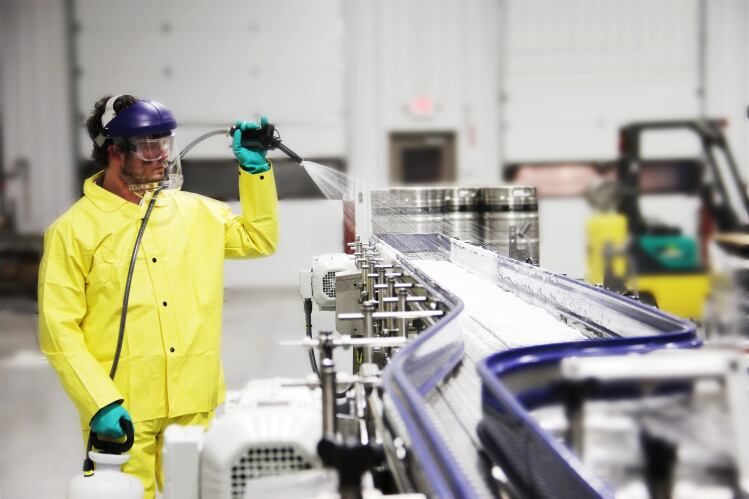
With margins tight across the meat processing sector, firms are paying ever greater attention to the cost of cleaning.
Different types of meat require different approaches when it comes to cleaning, says Steve Turnell, business development manager at Christeyns Food Hygiene. “Pork is generally the easiest to deal with, whereas beef and lamb detritus and lamb fat are the hardest to remove and require higher water temperatures – and, thus, increased amounts of energy.”
Both the pre-clean and pre-rinse are the most labour-intensive steps of the cleaning process, Turnell says. If the pre-clean is not effective or too short then the main clean can be inferior, making the job of the detergent more difficult, he adds.
“This lengthens the required contact time and adds costs and water usage. It is essential, therefore, that you use a very efficient pre-rinse.”
When applying the main foam detergent, Turnell says the objective is to cover and adhere diluted detergent to the remaining stubborn, dried-on food debris. “Attention should be made to undersides and difficult-to-reach areas,” he adds. “The foam consistency should be thick enough so as to not have too rapid a run-off.”

